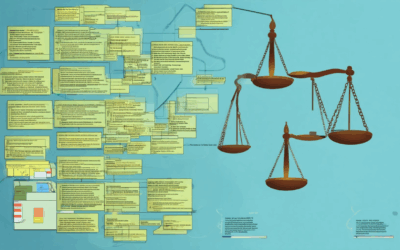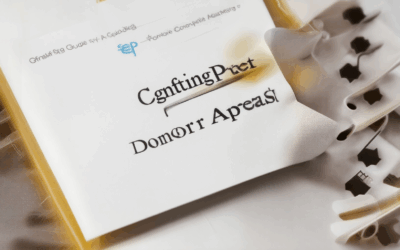In today’s fast-paced digital landscape, the ability to craft compelling and impactful press releases is crucial for nonprofits aiming to amplify their voices and drive meaningful change. Whether your nonprofit is launching a new fundraising campaign, celebrating a milestone, or announcing a significant policy victory, a well-executed press release can serve as a powerful tool for raising awareness and securing media coverage. However, creating an effective press release for a nonprofit requires careful strategy, precision, and a deep understanding of your audience’s needs and interests. This guide will walk you through the essential steps, best practices, and key considerations to ensure your nonprofit’s press release hits the mark and resonates with the right people at the right time.
Key Takeaways
- Craft press releases that are clear, concise, and impactful, focusing on critical information and avoiding unnecessary details.
- Tailor content to resonate with your audience, using transparency and appropriate style for each platform.
- Highlight achievements with quantifiable results to demonstrate impact and attract media attention.
- Maintain professionalism and accuracy to build trust and credibility with stakeholders.
- Leverage strategic keywords and impactful language to boost engagement and SEO performance.

How to Write a Press Release for a Nonprofit Organization
A well-crafted press release is essential for nonprofits to share their stories, announce milestones, and engage with stakeholders. Below is a step-by-step guide to crafting an effective press release tailored for your nonprofit organization.
1. Start with a Strong Headline
Your headline should capture attention and convey the essence of your press release. Use action verbs and emphasize key achievements or updates. Example:
[Nonprofit Name] Launches Innovative Community Empowerment Program
2. Include a Dateline
Add a dateline at the beginning of your press release. Format it as follows:
FOR IMMEDIATE RELEASE
[City, State] – [Date]
3. Craft a Compelling Opening Paragraph
The opening paragraph should briefly summarize the main news and provide context. Introduce your nonprofit, the key announcement, and its significance. Example:
[Nonprofit Name], a leading advocate for community development, is thrilled to announce the launch of its new initiative, “Empowering Futures,” designed to support underserved youth through education and mentorship programs.
4. Add a Quotation
Include a quote from your organization’s leader to lend authenticity and passion. Example:
“This marks a pivotal moment for our organization as we expand our impact and create new opportunities for those in need,” said [CEO/Founder’s Name], CEO of [Nonprofit Name].
5. Provide Detailed Information
Explain the initiative in detail, including its objectives, implementation plan, and expected outcomes. Highlight any partnerships, funding sources, or notable contributions. Example:
The “Empowering Futures” program will operate in three phases: educational workshops, mentorship programs, and community outreach events. We have secured a $250,000 grant from [Funding Partner Name] to support this initiative, which aims to benefit 1,000 students annually.
6. Include a Boilerplate
A boilerplate provides a concise overview of your nonprofit. Highlight your mission, vision, and key accomplishments. Example:
[Nonprofit Name] is a nonprofit organization dedicated to fostering positive change in local communities. Since 1995, we’ve impacted thousands of lives through innovative programs focused on education, health, and economic development.
7. Acknowledge Supporters and Partners
Recognize individuals, foundations, and organizations that have contributed to your success. Example:
We extend our gratitude to [Major Donor Name], whose generous contribution made this initiative possible, and to our partners [Partner Name], who have collaborated closely with us.
8. End with Media Contact Information
Include your media contact details for reporters to follow up. Example:
For more information, please contact:
[Media Contact Name]
[Title]
[Phone Number]
[Email Address]
[Website URL]
9. Optimize for SEO
Use relevant keywords naturally throughout your press release to improve search engine visibility. Consider terms like “nonprofit press release,” “community empowerment,” and “nonprofit initiatives.”
10. Proofread and Edit
Ensure your press release is free of grammatical errors and clearly communicates your message. A polished product reflects professionalism and credibility.
11. Consider Visuals
Attach high-quality images or logos to enhance the visual appeal of your press release. Clear visuals can make your news more engaging and professional-looking.
12. Distribute Strategically
Distribute your press release through wire services, social media platforms, and your organization’s website to maximize visibility. Tailor your approach based on your audience and goals.
By following these steps, you can create a press release that effectively communicates your nonprofit’s news, engages your target audience, and enhances your online presence.
The 7 Parts of a Press Release
A well-crafted press release is a vital tool for businesses, organizations, and individuals to communicate their news effectively. Below is a detailed breakdown of the key components that make up a press release:
- Headline
- The headline is the first thing readers see, so it needs to grab attention immediately. It should be concise, impactful, and include the most important information. Example: “Local Nonprofit Launches Innovative Community Program.”
- Dateline
- The dateline provides geographical and temporal information, helping readers understand the location and timing of the news. Example: “July 17, 2025 – [City, State] –”
- Introduction (Lead or Lead-In)
- The introduction sets the stage for the rest of the press release. It briefly summarizes the key points and answers the who, what, when, where, and why. Example: “In a groundbreaking move, XYZ Foundation has announced a $1 million grant to support local schools.”
- Body
- The body elaborates on the story, providing details, quotes, statistics, and background information. It should include supporting facts and explain the significance of the news. Example: “The grant will fund after-school programs, impacting over 500 students annually. ‘This is a pivotal moment for our community,’ said Jane Doe, CEO of XYZ Foundation.”
- Boilerplate
- This section introduces the organization or individual issuing the press release. It includes basic information like the company’s mission, vision, and contact details. Example:
XYZ Foundation is a leading philanthropic organization dedicated to education and community development. Since its inception in 1995, XYZ Foundation has awarded over $10 million in grants, touching thousands of lives locally and globally.
- Call to Action (CTA)
- A CTA encourages readers to take immediate action, such as visiting a website, attending an event, or making a donation. Example: “Visit www.xyzfoundation.org to learn more about our new initiative.”
- Contact Information
- The contact information ensures that media outlets and interested parties can reach out for further questions. Example:
For media inquiries, please contact:
Name: John Smith
Title: Communications Director
Email: [email protected]
Phone: (123) 456-7890
By following these seven components, organizations can create press releases that are clear, engaging, and effective in communicating their message.

How Much Does It Cost to Pay Someone to Write a Press Release?
The cost to hire someone to write a press release varies based on several factors:
- Complexity of the Press Release: Simple press releases may cost around $150, while detailed ones involving complex stories or extensive research can range up to $1,000.
- Writer’s Experience: Freelance writers with significant experience typically charge between $500 and $1,000 per project.
- Additional Services: Extra fees may apply for tasks like media outreach, editing, or social media promotion, which can increase the overall cost.
- Turnaround Time: Rush jobs may incur higher rates, often ranging from $300 to $600, depending on the urgency.
For precise pricing, consider obtaining quotes from multiple writers and negotiable rates to find the best fit for your needs. Always ensure the writer understands your goals and deadlines to avoid unexpected costs.

Five Rules for Writing an Effective Press Release
NPO Expert is a dedicated resource for nonprofit organizations (NPOs), offering insights, tools, and strategies tailored to assist in nonprofit management, growth, and sustainability. The site covers topics like fundraising, nonprofit compliance, employee training, risk management, and community impact. With articles and resources aimed at maximizing the effectiveness of charitable organizations, NPO Expert is an essential guide for NPO leaders and staff looking to enhance their impact and navigate the complexities of the nonprofit sector.
- Rule 1: Keep It Clear and Concise
- Your press release should be no longer than one page. Focus on the most critical information and avoid unnecessary details.
- Use a clear, professional tone that aligns with your organization’s voice while maintaining readability.
- Include a strong headline that captures attention and summarizes the key news. Use a subheadline to provide additional context if needed.
- Rule 2: Tailor to Your Audience
- Identify your primary audience and tailor the content to resonate with their interests and needs.
- Be transparent and honest in your communication. Avoid jargon or overly technical language that may confuse readers.
- Consider the medium where the press release will be published. Adjust the length and style accordingly to suit the platform (e.g., online vs. print).
- Rule 3: Focus on Key Achievements
- Highlight the significance of your news. Clearly articulate how it benefits your organization, your stakeholders, and the community.
- Use quantifiable achievements whenever possible, such as numbers of donors, funds raised, or community impact.
- Provide evidence of your success, whether through statistics, testimonials, or media coverage.
- Rule 4: Maintain Professionalism
- Always represent your organization professionally, even when discussing competitors. Avoid negative or inflammatory language.
- Be accurate and avoid sensationalism. Stick to factual information and avoid exaggerations.
- Proofread and edit your press release carefully to ensure there are no errors or typos.
- Rule 5: Distribute Wisely
- Choose the right platforms for distribution based on your audience and reach. Consider online platforms, local newspapers, or industry-specific publications.
- Use social media to promote your press release and engage with your audience. Include links to the full release on your website and social channels.
- Monitor the performance of your press release and adjust your strategy as needed to maximize visibility and impact.
What Are the 5W’s of a Good Press Release?
A well-crafted press release effectively communicates key information while engaging the audience. To achieve this, it should adhere to the 5W’s of journalism: Who, What, When, Where, and Why. These elements ensure clarity, relevance, and impact, making the press release stand out.
Who
The “Who” involves identifying the key individuals or entities associated with the news. This includes:- Organization Name: Clearly state the company, charity, or organization issuing the press release.- Contact Information: Provide details such as phone numbers, email addresses, and website URLs for media inquiries.- Notable Figures: Mention executives, spokespersons, or other relevant individuals who can speak on behalf of the organization.
What
The “What” focuses on the core event or action. It should be specific and answer the question: “What happened?” This includes:- Event Description: Detail the primary action, such as a product launch, funding acquisition, or organizational milestone.- Key Details: Include dates, times, locations, and any unique aspects of the event.- Impact Statement: Explain how this development affects stakeholders, customers, or the public.
When
The “When” specifies the timeline and context of the press release. Key points to include:- Date and Time: Clearly state the date and time of the event or announcement.- Deadline: If applicable, specify the submission deadline for media coverage.- Seasonal Context: Align the release with relevant events or seasons to maximize visibility.
Where
The “Where” provides geographical or platform context. This includes:- Physical Location: If the event is held offline, specify the venue name, address, and city.- Online Platform: If the event is virtual, mention the live-streaming platform or website.- Media Outlets: Indicate where the press release should be sent, such as local newspapers or national media outlets.
Why
The “Why” explains the significance of the news. It answers the question: “Why is this important?” This includes:- Relevance: Highlight how the event or announcement impacts the organization, its industry, or the public.- Stakeholder Impact: Emphasize how the news affects employees, donors, partners, or customers.- Future Outlook: Discuss potential future developments or changes resulting from the announcement.
By incorporating these elements, a press release becomes more engaging, informative, and effective in capturing the audience’s attention.

The Three Most Important Words in a Press Release
In crafting an effective press release, the optimal approach involves leveraging specific words that resonate with readers and optimize for search engine visibility. Among the most impactful words are:
- Free : This word triggers immediate interest due to its association with value and cost-effectiveness. It often leads to higher engagement and media pickup.
- New : This term sparks curiosity and indicates innovation or updates, making it ideal for highlighting the latest developments in products or services.
- Best : Conveys quality and excellence, encouraging readers to perceive the offering as superior and worth their attention.
<
These words are chosen for their ability to grab attention quickly, enhance readability, and improve SEO performance. By strategically placing them in headlines and subheadings, press releases can effectively compete in today’s digital landscape.





0 Comments